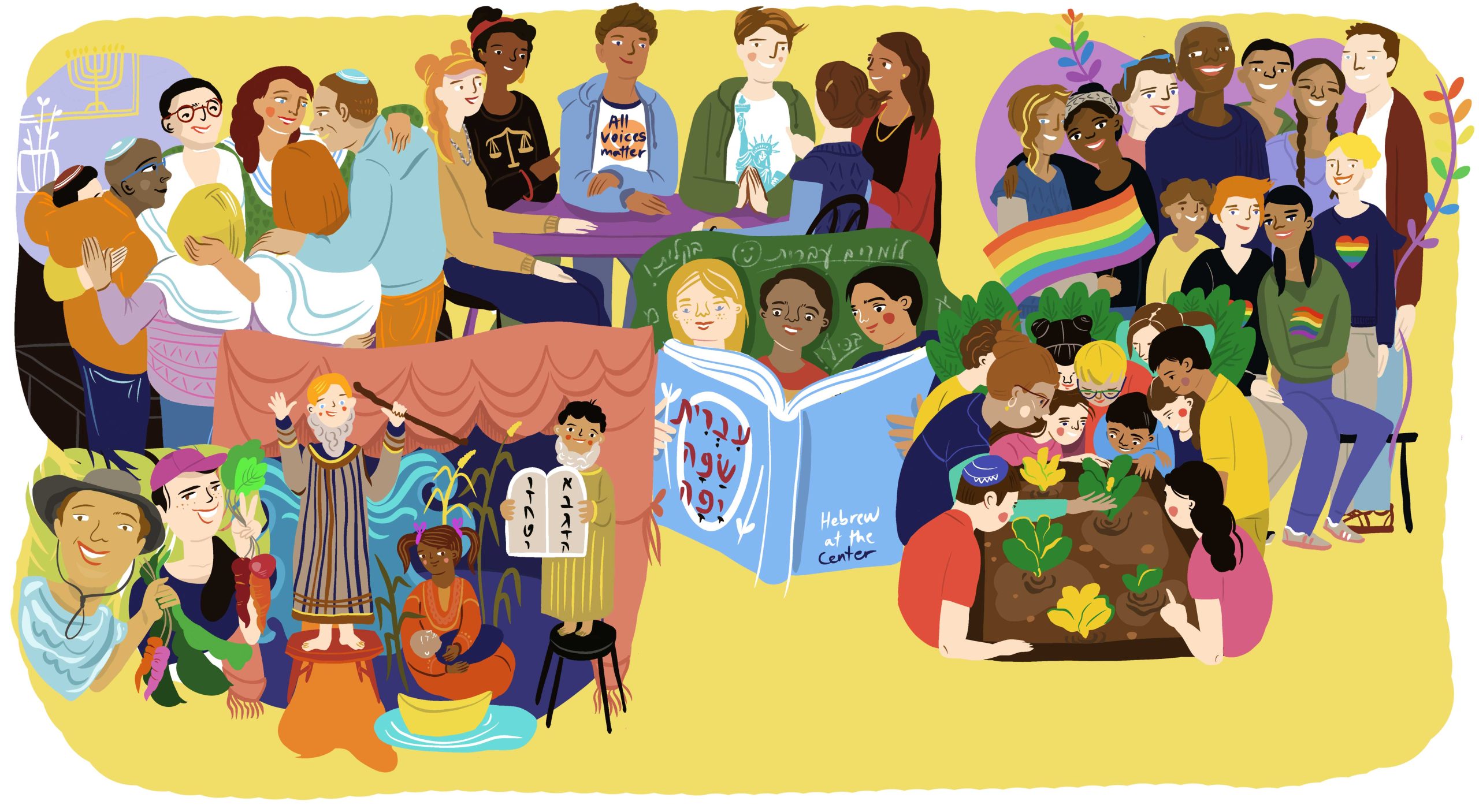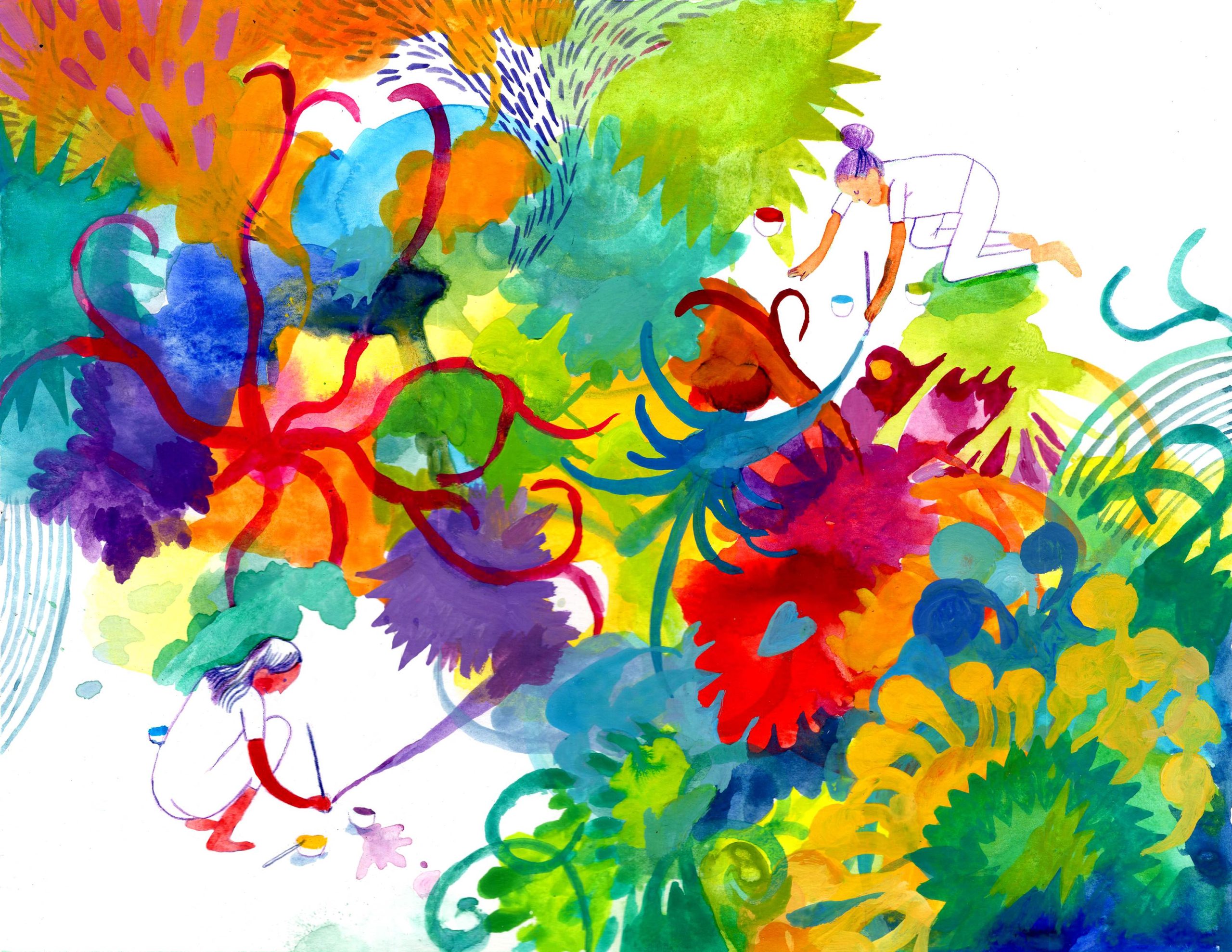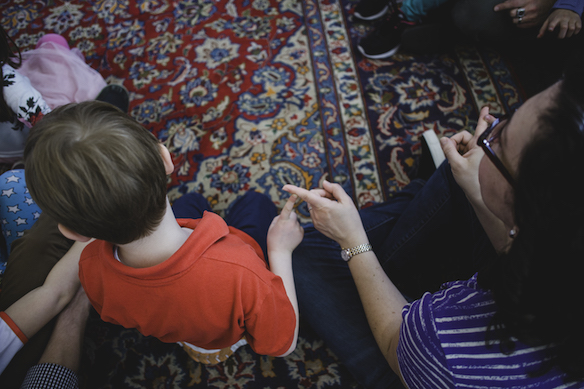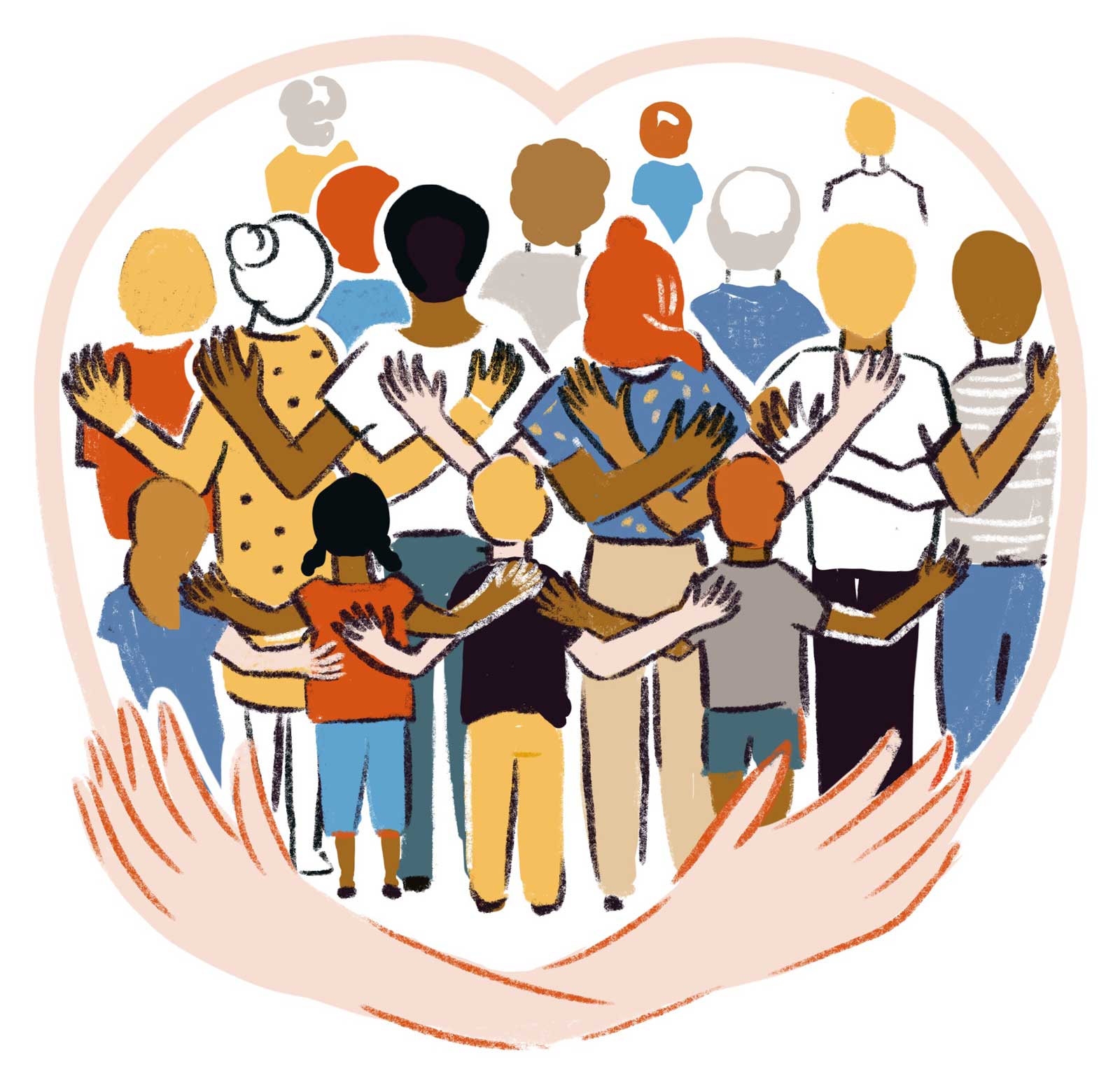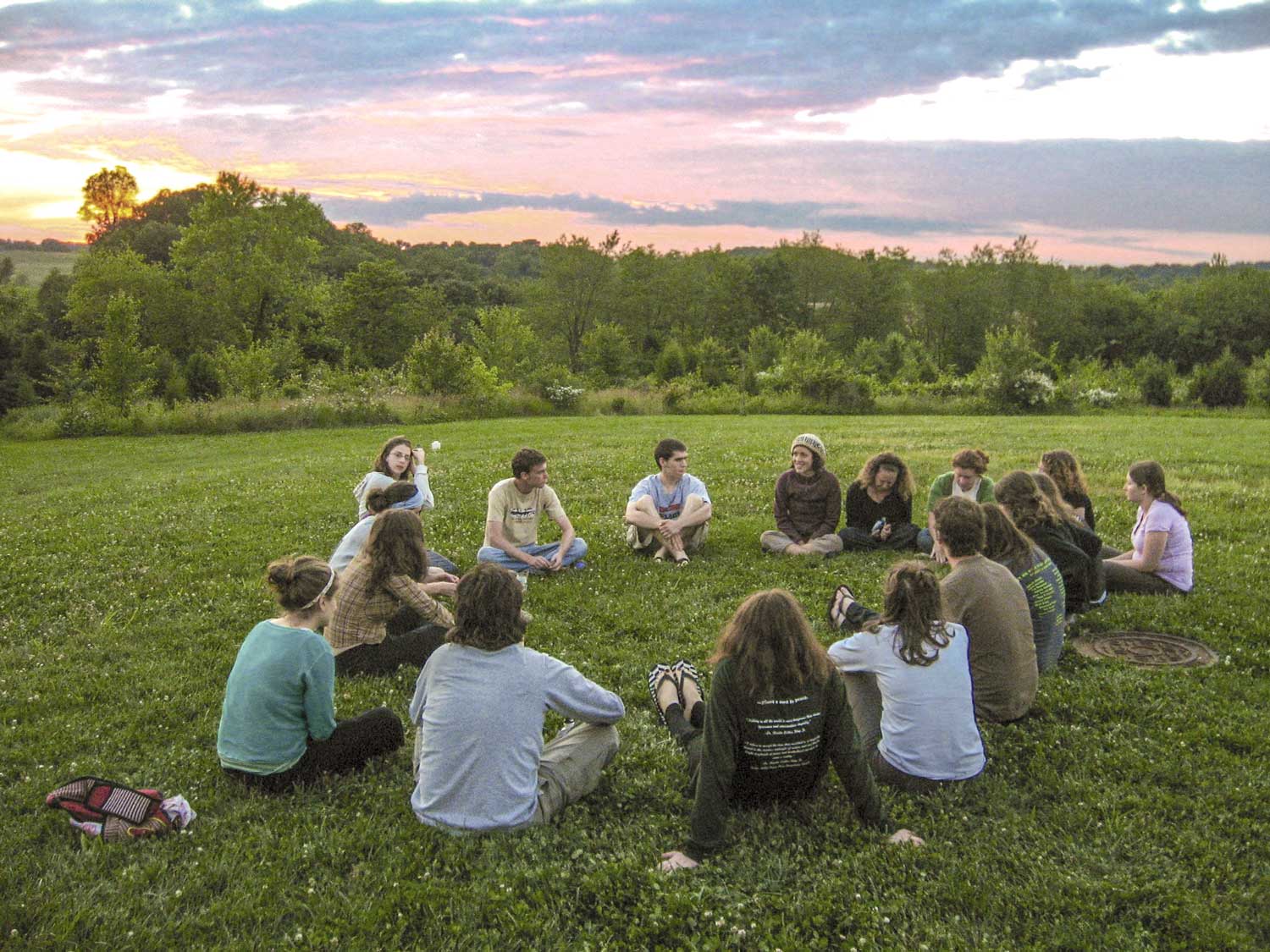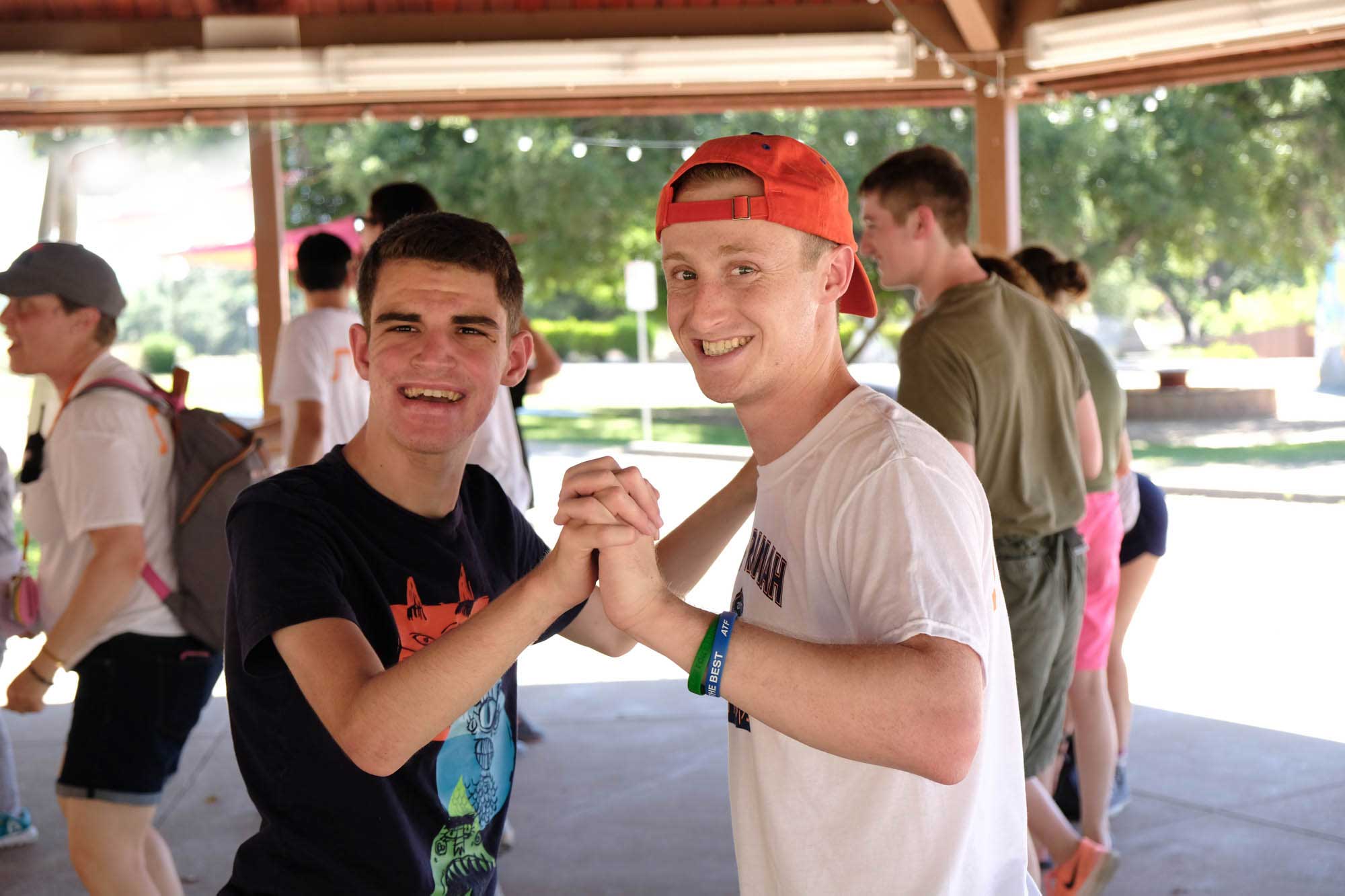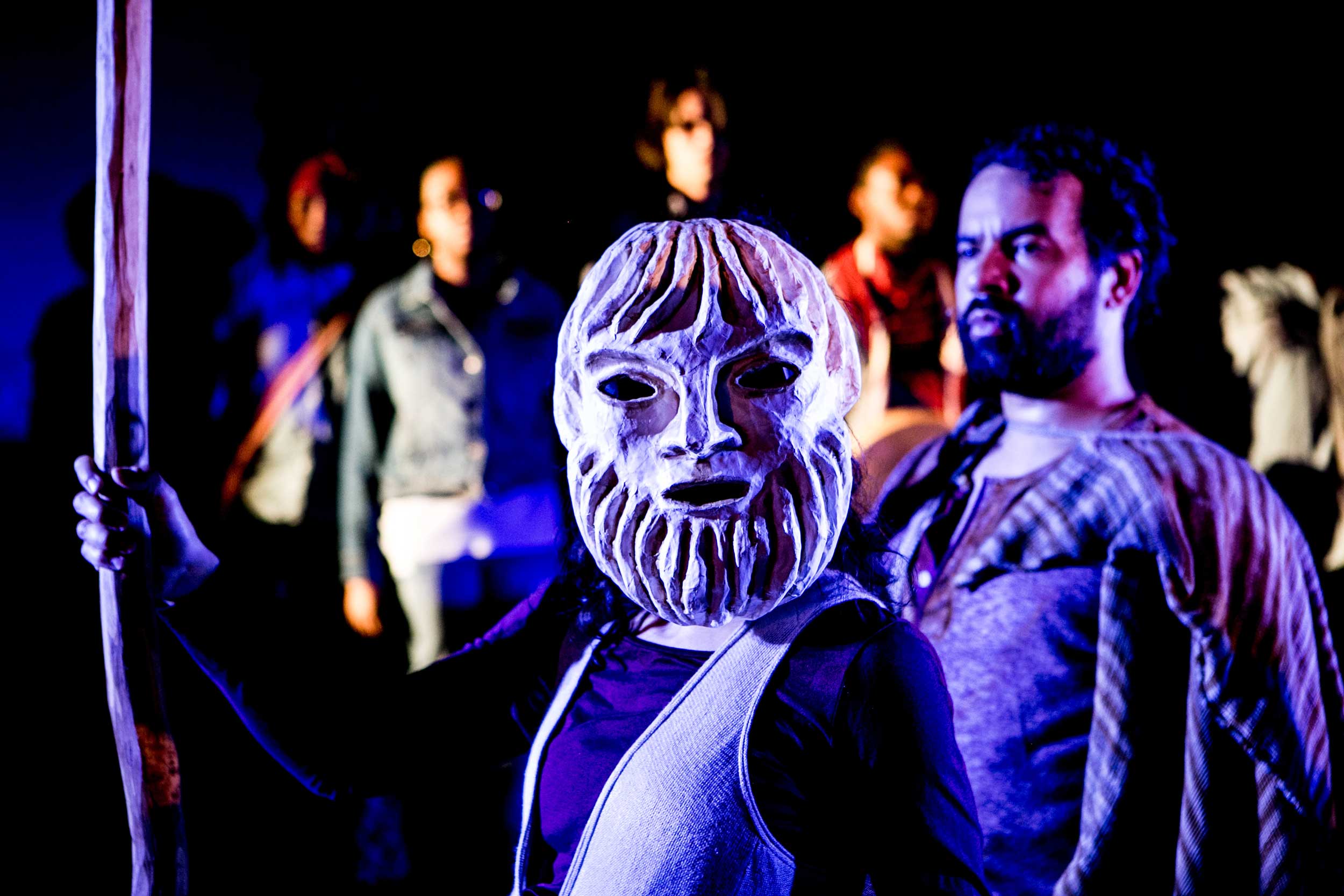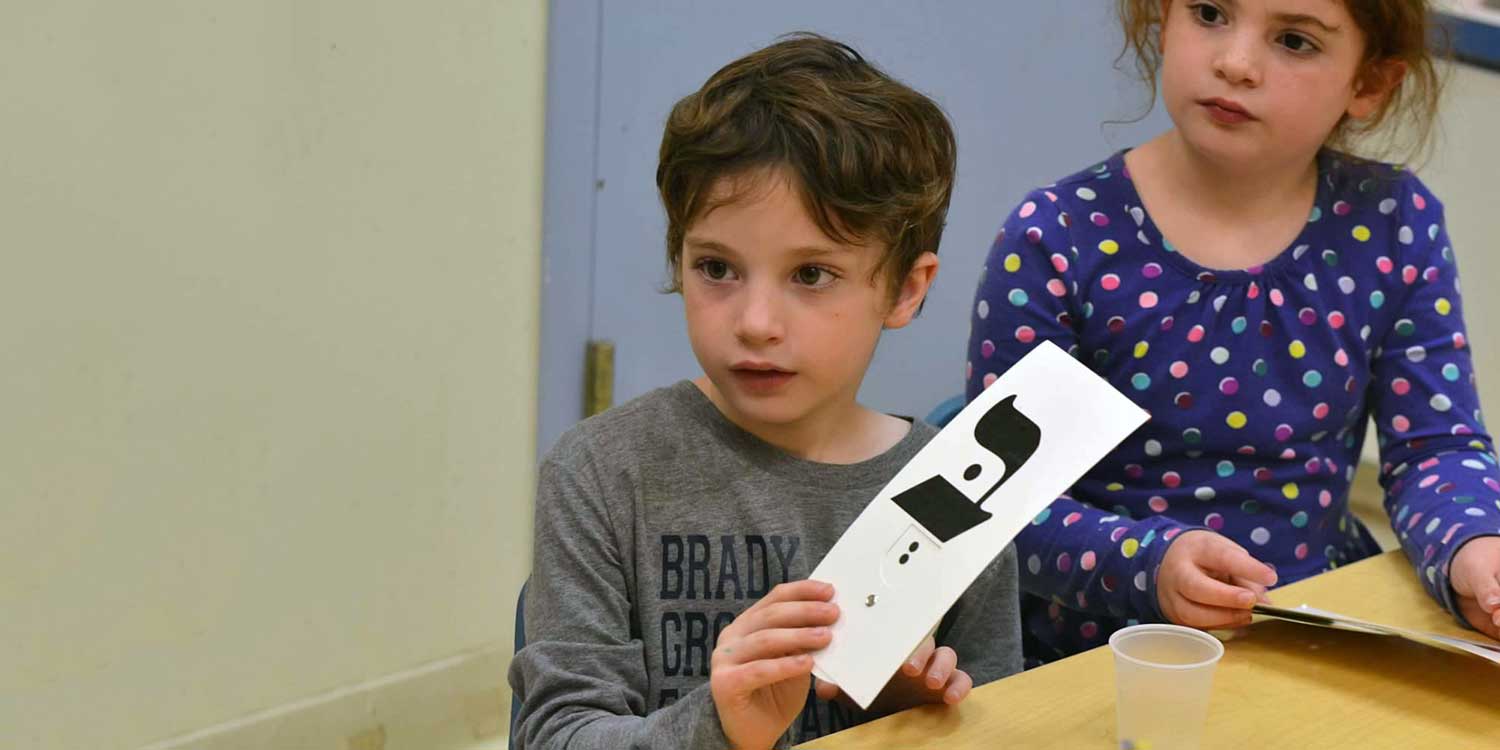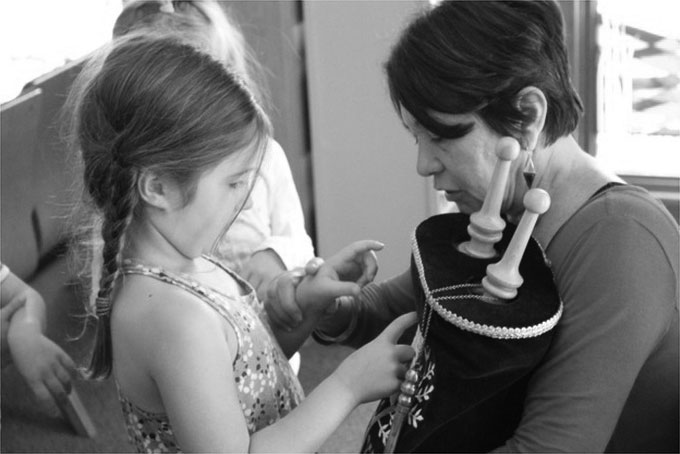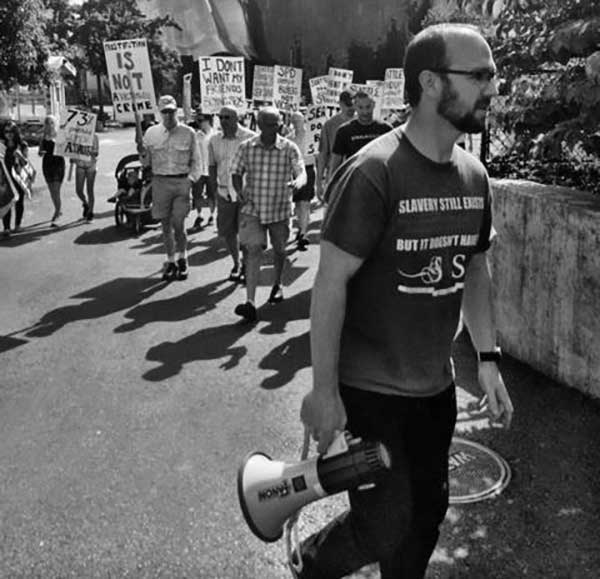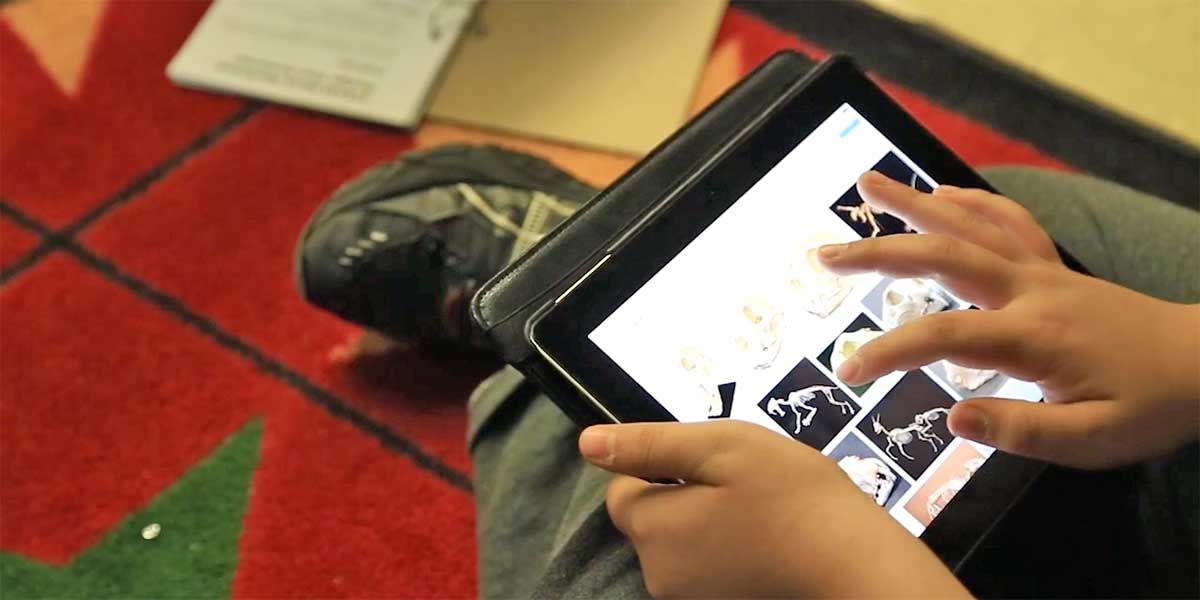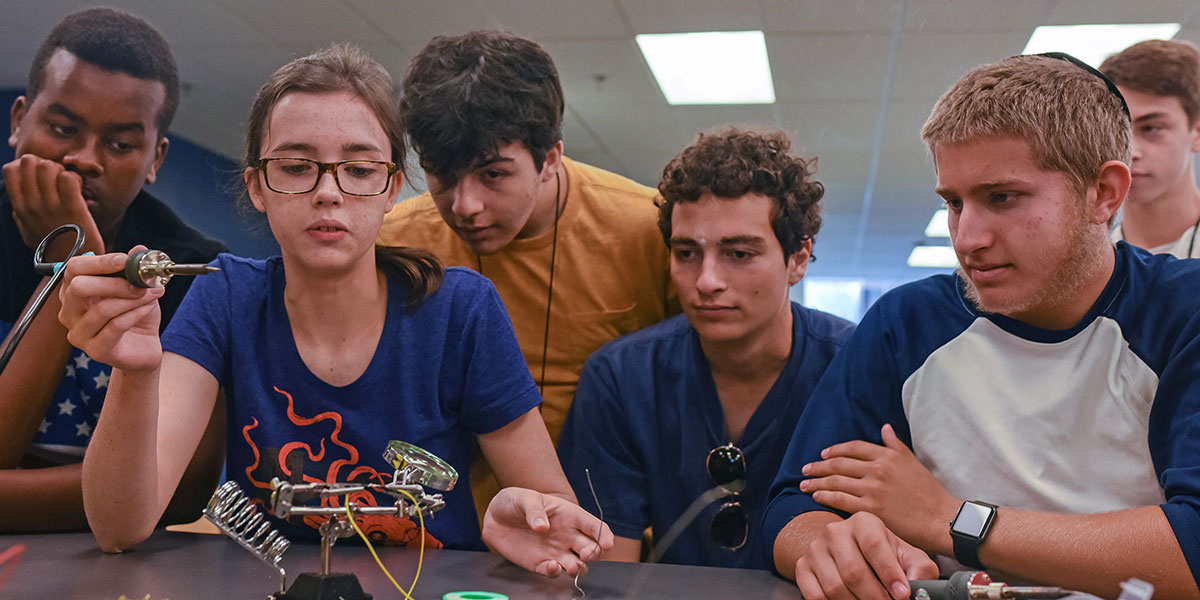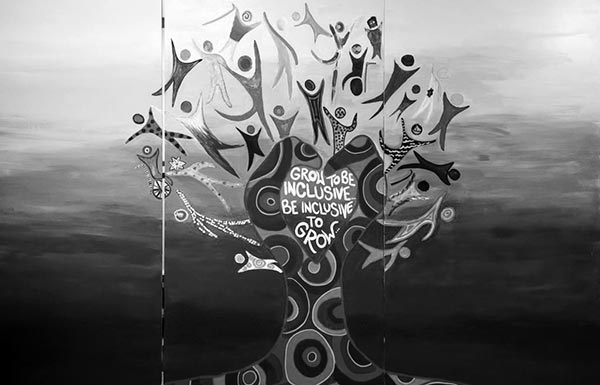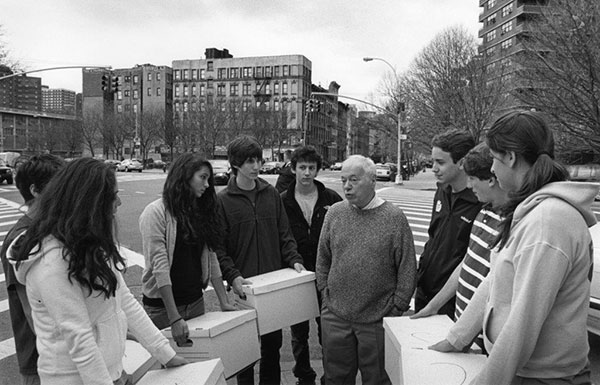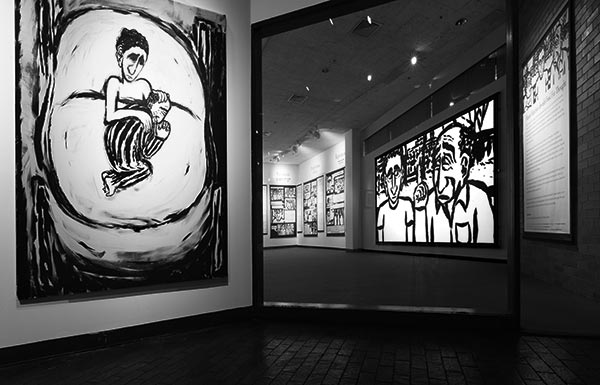ARTICLE Antisemitism — Here and Now: A Study and Teaching Guide
Dear Reader,
The following interactive study guide is designed to help you maximize your understanding of Deborah Lipstadt’s book, Antisemitism: Here and Now, and to personalize your reading experience. It can also be used by facilitators and educators to structure conversations on antisemitism today. The guide contains a chapter-by-chapter review in the form of a salient quote and a set of three questions for each letter in a series. The questions are there to alert readers to the central themes of each letter grouping, to invite reflection on one’s own experiences, and to engage in a mental debate and discussion with the author. There are no answers given; the questions are either designed to draw out the opinion of individual readers or involve a basic comprehension of the content.
This section is followed by a brief interview with the author to get to know a little bit more about Deborah Lipstadt and what inspired her to devote a book to this topic. The guide also includes seven case studies that a teacher, Hillel leader, board president, or book club moderator may wish to dissect with a group and analyze. The case studies are all composites of real-life situations. Walking through them carefully can provide participants an opportunity to think about how to respond when encountering parallel situations in their own lives. Lastly, the guide contains several group exercises to provoke conversations about antisemitism, identity, and diversity, as well as an online resource section with links to other books and to organizations fighting antisemitism. Each section of the guide begins with a quote from the Jewish philosopher Martin Buber (1878-1965) to put these critical conversations within the context of human relationships.
Antisemitism: Here and Now
A Chapter-by-Chapter Study Guide
“The real struggle is not between East and West, or capitalism and communism, but between education and propaganda.”
Martin Buber, I and Thou
A Note to the Reader:
“ …the existence of prejudice in any of its forms is a threat to all those who value an inclusive, democratic, and multicultural society…Antisemitism flourishes in a society that is intolerant of others, be they immigrants or racial and religious minorities. When expressions of contempt for one group become normative, it is virtually inevitable that similar hatred will be directed at other groups.” [page xi]
- Lipstadt opens the book with the observation “This has been a challenging project.” For a historian of the Holocaust, why would a book on antisemitism be more difficult to write than one on the Shoah?
- According to Lipstadt, why shouldn’t a conversation on antisemitism be driven by either increasing or decreasing numbers of antisemitic acts?
- What is an “elastic” view of antisemitism?
I. Antisemitism: A Conversation
Letter #1: The Perplexed
“ I feel comfortable as a Jew, except maybe when Israel is the topic of discussion.” [page 4]
- Why is Abigail, a Jewish college student, hesitant and confused in this first letter to her professor?
- Abigail cites the canard that Jews must be in some way responsible for antisemitism since it has persisted for so long. As you read the book, variations of this myth will come up multiple times. How does Lipstadt confront it?
- Joe, Lipstadt’s fictional, non-Jewish university colleague, also struggles with the rise of hate generally and the stubbornness of antisemitism in society. What does he not fully understand?
Letter #2: A Delusion
“ It is hard, if not impossible, to explain something that is essentially irrational, delusional, and absurd.” [page 7]
- How does antisemitism fit into the context of a conspiracy theory?
- What does a “self-sealing quality” mean and how does antisemitism have this feature?
- In this chapter, we come upon the first of several jokes that Lipstadt shares with her readers in the course of the book. There have been several books written on the relationship of Jews to humor - making jokes as a way to cope with suffering. In Man’s Search for Meaning, Viktor E. Frankl writes of his concentration camp experience: “There were songs, poems, jokes, some with underlying satire regarding the camp. All were meant to help us forget, and they did help.” Do you think there is a relationship between being Jewish and being funny?
Letter #3: A Definition
“ If you cannot define something, you cannot address it or fight it.” [page 15]
- Abigail asks Lipstadt “Can someone be an unintentional antisemite?” Based on Lipstadt’s response, what do you think?
- The expression attributed to the philosopher Isaiah Berlin that “an antisemite is someone who hates Jews more than is absolutely necessary” is itself perplexing. What does Berlin mean by this?
- Consider two formal definitions of antisemitism that Lipstadt shares in this letter. What differences do you detect between them? Which resonates more with you and why?
“A certain perception of Jews, which may be expressed as hatred towards Jews. Rhetorical and physical manifestations of antisemitism are directed toward Jewish or non-Jewish individuals and/or their property, toward Jewish community institutions and religious facilities.” [emphasis added] [page 15]
International Holocaust Remembrance Alliance
“A persisting latent structure of hostile belief towards Jews as a collectivity manifested in individuals as attitudes, and in culture as myth, ideology, folklore, and imagery, and in actions – social or legal discrimination, political mobilization against Jews, and collective or state violence – which results in and/or is designed to distance, displace, or destroy Jews as Jews.” [emphasis in original] [pages 15-16]
Helen Fein
Letter #4: A Spelling
“Rarely has so much meaning been vested in a hyphen and an uppercase letter.” [page 22]
- Spell-check (and the Oxford English Dictionary) offers only one correct spelling of “antisemitism” and it is not the one Lipstadt uses throughout the book. Why does Lipstadt insist on using one that is all lowercase and without a hyphen?
- There is an important subcontext for the spelling of “antisemitism” that Lipstadt shares with Abigail and Joe. What are the three faulty assumptions behind the word “Semitic” that Lipstadt points out?
- In “Antisemitism: No Hyphen” from Why?: Explaining the Holocaust, Peter Hayes writes that Wilhelm Marr, who created the word antisemitism, wanted a term that was “an abstract, pseudoscientific euphemism” that would
- differentiate Jews authoritatively from everyone else,
- root their difference in their very nature and thought processes, and thus
- assert that opposition to Jews was not a mere prejudice, but a response to a demonstrable reality that had to be dealt with politically.
What does Hayes mean by “not a mere prejudice” but something bigger than that?
Did it work? Can you think of other linguistic examples where a euphemism not only described or manipulated a condition but actually was responsible for perpetuating a falsehood?
II. A Taxonomy of the Antisemite
Letter #1: The Extremist: From the Streets to the Internet
“ …easy ahistorical analogies to the Holocaust and Nazism cheapen the genocidal actions of the Germans and often create an unwarranted angst among people today.” [page 30]
- Abigail wants to understand what the uptick in antisemitic incidents means, while finding a way to respond to friends who believe that “all the concerns about antisemitism today are overblown.” What would you say to her friends?
- Lipstadt offers “coded” references that can be decoded as antisemitism. Name a few that she mentions. How is antisemitism both similar to and different from other forms of antisemitism?
- Extremists, in Lipstadt’s portrait, “tend to proliferate during times when there is populist resentment against what is regarded as an ‘elite’ class of people – usually highly educated men and women with liberal political and social views.” If that is the case, why are we seeing a resurgence of antisemitism now?
Letter #2: Beyond the Extremist
“There are many antisemites who would never dream of even using offensive rhetoric.” [page 43]
- “Funny, you don’t look like an antisemite.” Lipstadt discusses those who, as part of their strategy, make a point of not “looking” like antisemites. What’s the strategy of such white supremacists?
- The subtlety of this type of antisemitism can make it much harder to fight. Can you think of a personal example of this kind of encounter with antisemitism?
- How can one combat subtle forms of antisemitism that often fly under the radar?
Letter #3: Antisemitic Enablers
“ On some level, I find the utilitarian antisemite – the pot-stirrer who enables haters – to be more reprehensible than the ideologue who openly acknowledges his antisemitism. Because he is not affiliated with any extremist group, the utilitarian stands a better chance of both plausibly denying his antisemitism and influencing an audience that would never listen to an extremist. The unapologetic hater is, at least, honest about his feelings. With him, we know what we are up against.” [page 55]
- Lipstadt here distinguishes between an ideological antisemite and a utilitarian one. What is the difference between them? Do you think it should make a difference in how we respond to these different expressions of antisemitism?
- In a marginal note, Lipstadt contends that “White supremacists claim that ‘whites’ face a looming genocide. They, not the minority groups they attack, are the true victims.” Why do they see themselves as victims and how does this move the light away from their hate crimes?
- Lipstadt quotes journalist Franklin Foer that “Philosemites are antisemites who like Jews.” What does this expression mean?
Letter #4: The Dinner Party Antisemite
“ Someone who feels the need to boast that he has Jewish (or African-American) friends is more often than not someone who has problems with Jews (or blacks) who aren’t his friends.” [page 70]
- Joe describes the “gentleman’s antisemitism” he experienced among his parents’ friends during his childhood. Ask your own parents or grandparents to share similar experiences: college quotas, restricted golf club memberships for Jews, or professional roadblocks.
- Lipstadt claims that some people deny that a comment is antisemitic because it is made by a friend or family member. Can you think of a case in your own life when this has happened? If you had the chance to redo such an encounter, what might you say?
- “If you make bigoted statements about Jews, you are antisemitic, regardless of how many Jews you are related to.” Do you agree or disagree? Justify your answer.
Letter #5: The Clueless Antisemite
“The clueless antisemite is an otherwise nice and well-meaning person who is completely unaware that she has internalized antisemitic stereotypes and is perpetuating them.” [pages 77-78]
- Abigail is upset because a friend assumed she’d love a sale or bargain because she is Jewish. She wants a clever retort but a thoughtful response might prove more helpful. What might you say in a similar situation?
- Stereotype threats happen when groups internalize the stereotypes others associate with them. Jews can be just as guilty of perpetuating antisemitism as non-Jews by using stereotypes about Jews. “When groups that have been subjected to discrimination and prejudice denigrate themselves, they do more than internalize a negative self-perception. They give license to others to do likewise,” contends Lipstadt. We often take offense when our group is the subject of jokes made by members of other groups, but not when someone from within our group makes a joke about Jews. Is this self-denigration healthy or itself a problem? Are jokes that are subtly – and not so subtly – antisemitic acceptable if told by Jews? Can we say things that others can’t? Or does it suggest that we, even subtly, agree with what is being suggested by the joke?
- How might the taxonomy of antisemites, as outlined by Lipstadt in this chapter, help in fighting antisemitism?
III. Contextualizing Antisemitism
Letter #1: A Cognitive Failure?
“…is there any way of educating the haters?” [page 83]
- According to Lipstadt, what is “at the heart of all conspiracy theories”?
- Lipstadt brings in examples of “rational answers to irrational accusations.” Why doesn’t this work as an approach? What does or might work?
- In her discussion of Professor Joy Karega’s support of antisemitic conspiracy theories and theorists, Lipstadt touches on the minefield of black/Jewish relations. Earlier in the book, Lipstadt condemns the competition for victimhood that can take place between minority groups that have both been victims of prejudice. Using personal experience and outside resources, how would you describe black/Jewish relations today? How do you think ruptures between blacks and Jews can be healed?
Letter #2: Delegitimizing Antisemitism: Jews Can’t Be Victims
“ The fact that you have a Jewish heritage does not automatically equip you - or anyone else, for that matter – to know what to say when challenged by someone who minimizes the significance of antisemitism today.” [page 90]
- As this letter begins, Lipstadt boldly writes that “Antisemitism is not in the same category as racism.” Later she writes that “Antisemitism is different in structure, history, and contemporary impact than other forms of racism.” In what ways is antisemitism the same, and in what ways is it different?
- Sometimes Jews can be very sensitive to threats of antisemitism but ironically espouse racism. How might you begin a conversation with someone who behaves this way?
- In an editorial in Science, Jose-Alain Sahel, the chair of the Department of Ophthalmology at the University of Pittsburgh School of Medicine, shared the following observation after the massacre of Jews at Pittsburgh’s Tree of Life Synagogue: “The French philosopher Emmanuel Levinas asserted that looking into the face of one’s fellow invokes the imperative: ‘Thou shalt not kill.’ This sounds naïve and far too simplistic in the face of guns and strongly held prejudices. Yet, is there anything else more meaningful than looking into human faces and listening?” Describe a time you listened very carefully to a victim of racism.
Letter #3: Antisemitism and Racism: The Same Yet Different
“ As the victims of prejudice ourselves, we know from personal experience how important it is to have the support of other communities when we fight prejudice against us.” [page 99]
- Should we, as Abigail suggests, look for commonalities in victimhood, or does doing so diminish the uniqueness of the hate shown towards any particular group identity?
- Lipstadt condemns the “my discrimination is worse than your discrimination” game. But people still play it. In fact, in America, it seems to be more popular than ever. What is harmful about perpetuating this narrative?
- The fact that many American Jews do not experience everyday antisemitism and have achieved a historically unprecedented degree of success in this country has led some to dismiss the significance of antisemitism, especially when it takes place in Europe and other geographically faraway places. What would you say to such a person?
Letter #4: A Time to Panic?
“People who speak of the campus as a ‘hotbed’ of antisemitism overstate the case and are positing something that is at odds with most students’ reality.” [page 110]
- Abigail’s grandparents and their friends bemoan the “explosion of antisemitism” throughout the world today and compare it to 1930s Germany. Do you know people who do this? Do you make these comparisons?
- Why does Lipstadt believe that such comparisons are inaccurate and potentially harmful? Do you agree with her?
- Near the end of this letter, Lipstadt distinguishes between current manifestations of antisemitism in America and in Europe. She believes this requires our attention rather than our panic. What do you think is the difference between the two? Can you cite an example of each?
IV. “Yes, But”: Rationalizing Evil
Letter #1: The Ominous Case of Salman Rushdie
“ Jews, together with other religious and ethnic minorities, have always thrived in societies where freedom of speech and religion have been highly valued. They have blossomed in societies that welcome an array of cultures and beliefs.” [page 117]
- Joe is troubled by what he believes might be a connection between antisemitism and the intolerance and violence of Muslim extremists. Does Lipstadt agree?
- Lipstadt uses the case of life-threatening responses to Salman Rushdie’s book, The Satanic Verses, to highlight the indifference of other artists, politicians, and intellectuals to Muslim extremism. Can you think of other contemporary cases that illustrate this and the broader political forces at play?
- “‘Yes, but’ is the top of the slippery slope of immoral equivalencies,” states Lipstadt at the end of her letter. What does she mean by this and how does it apply to antisemitism?
Letter #2: Pixilating the Problem
“ …liberal friends are very happy to criticize Catholicism, Christianity, and Judaism, but when it comes to Islam, it feels as though all their open-minded principles are disregarded.” [pages 123-124] - Lloyd Newsom
- In this letter, Lipstadt turns her attention to the murder of Theo van Gogh in 2004 by a Dutch-Moroccan Muslim extremist for producing a short film about Islam’s oppressive laws regarding women and the global responses to his murder. Which response that she cites, if any, disturbs you the most?
- In this letter, Lipstadt poses a profound ethical dilemma: should a news outlet publish material that may be inflammatory - and may even serve as an incitement to murder - for the sake of freedom of expression? Make a compelling case for both sides.
- Should newspapers apologize for reporting on stories that some find offensive?
Letter #3: Parisian Tragedies
“ In the end, there is only one acceptable response when freedom of expression is met with terrorism and murder: a plain and unequivocal declaration that this is wrong. Nothing – not poverty, anger, disenfranchisement, religious belief, or anything else – can justify it.” [page 127]
- Quoting journalist Theodor Holman, Lipstadt writes, “Tolerance has been transformed into cowardice.” What does this mean? Later, Lipstadt distinguishes between being murdered for something one does as opposed to being killed because of something one is. What is the difference, according to Lipstadt? Do you think this difference makes one or the other more acceptable or understandable?
- What is the “short journey” from intolerance to extremism to antisemitism that Lipstadt describes?
- Lipstadt concludes that “There are ways of disagreeing with the policies of the Israeli government without sounding antisemitic. And blaming all Jews for something wrong that Israel has done – that’s antisemitic.” Describe an acceptable way of disagreeing with policies of the Israeli government.
V. Holocaust Denial: From Hard-Core to Soft-Core
Letter #1: A Matter of Antisemitism, Not History
“ …when I first heard of Holocaust deniers…I, too, dismissed them as not worthy of serious analysis. Then I looked more closely, and I changed my mind.” [page 140]
- Abigail initially thought that Holocaust deniers were in the same category as flat-earth theorists. What does Lipstadt write that might change her mind?
- Why do deniers, given the implausibility of their arguments, attract adherents, according to Lipstadt?
- Lipstadt refuses to enter into debates with Holocaust deniers, stating “You can have your own opinions, but not your own facts.” Why not debate deniers?
Letter #2: Inverting Victims and Perpetrators
“ I often hear Israelis described as the equivalent of Nazis.” [page 146]
- What is “genocide inversion” and how can it be countered effectively?
- Lipstadt makes a distinction in this letter and elsewhere between hard-core and soft-core denial of the Holocaust. What is that distinction and which does she believe is harder to fight?
- Lipstadt uses the term “Jew-baiting.” What is it and what is its intended outcome?
Letter #3: Branding Victims and Collaborators
“ Critics…who claim there was a collaboration between Nazis and Zionists do so for one repugnant reason only: to imply that the Jews themselves were complicit in the Nazis’ horrendous crimes.” [pages 154-155]
- In Letter #3, Lipstadt describes the Ha’avara or Transfer Agreement. Here she discusses the way it is used by soft-core deniers. How is it used as a form of denial?
- Lipstadt claims that what she’s described in this letter is “one of the more sophisticated and slippery forms of Holocaust denial.” What reason does she give?
- Discuss the “Livingstone Formulation” and the problem with it.
Letter #4: De-Judaizing the Holocaust
“ I worry not just about the rewriting of history but also about the attack on democracy that seems to come with it.” [page 156]
- Both Abigail and Lipstadt ponder the “interlocking directorate” of trends in Europe: the “trampling on historical accuracy” that feeds on antisemitism and attacks democracy. How does Lipstadt link these behaviors and attitudes?
- Lipstadt makes a broad claim that countries that participate in these behaviors are “engaged in blatant and conscious efforts to rewrite their histories.” Why would they want to do so?
- Discuss the change of legislation in 2018 by the Polish Parliament and its aftermath.
VI. The Campus and Beyond
Letter #1: Toxifying Israel
“ BDS-inspired academic and cultural boycotts can be inconsistent and capricious.” [page 172]
- Abigail is concerned about freedom of speech on campus and cites examples of Israelis who are barred from speaking on campus or so badly heckled they can’t be heard. Have you ever personally experienced this squashing of a “free exchange of ideas” on campus or beyond?
- Abigail sees herself as progressive, but she has been told that if she supports Israel and believes in Zionism she cannot be politically progressive. Lipstadt shows her the faulty logic of the left. How does she quell Abigail’s anxiety?
- Lipstadt offers three principles that form the bedrock of the BDS movement and concludes that boycotts are “blunt instruments.” What are the principles and what does she mean by a blunt instrument?
Letter #2: BDS: Antisemitism or Politics?
“ I often hear the argument that the BDS movement can’t be considered antisemitic because many of its members are Jews…It is sadly true that one of the most pernicious results of prejudice is when members of a persecuted group accept the ugly stereotypes used to characterize them.” [page 183]
- Joe chimes in with a critical question: “However antithetical to academic freedom BDS may be, can it truly be called antisemitic?” Take us through Lipstadt’s response.
- How can one compellingly fight the assertion that Zionism is racism?
- What does Lipstadt mean when she differentiates between the actual goal and the stated goal of the BDS movement?
Letter #3: Campus Groupthink: Not-So-Safe Zones
“ Students on American college campuses seem to have taken notions of political correctness, as well as ideas about ‘inclusivity,’ ‘exclusivity,’ and ‘safe space,’ to a point where they trump freedom of speech.” [page 185]
- In this letter, Lipstadt questions the silencing of opinions on campus that may be deemed offensive, quoting Salman Rushdie’s words: “Ideas are not people. Being rude about an idea is not the same as being rude about your aunt…” What does Rushdie mean?
- Lipstadt makes a connection between silencing and antisemitism on campus. How are these trends connected?
- In their book The Coddling of the American Mind: How Good Intentions and Bad Ideas Are Setting Up a Generation for Failure, Greg Lukianoff and Jonathan Haidt argue that “The notion that a university should protect all of its students from ideas that some of them find offensive is a repudiation of the legacy of Socrates, who described himself as the ’gadfly‘ of the Athenian people. He thought it was his job to sting, to disturb, to question, and thereby to provoke his fellow Athenians to think through their current beliefs and change the ones they could not defend.” How is this coddling trend changing the atmosphere of university life and society’s capacity to debate?
- Some pro-Israel groups have attempted to limit the activities of pro-BDS groups on campus. Is it dangerous for Jews to want to prevent certain kinds of speech but then object when Israelis are silenced? Are the two instances fundamentally different?
Letter #4: Progressivism and Zionism: Antisemitism by Subterfuge
“ Many Jews involved with progressive causes are increasingly feeling this tug, if not outright war, between their Jewish and political identities.” [page 195]
- Abigail shares her distress that she has been labeled privileged, rather than progressive, because she is Jewish. Some campus groups refuse to work with Jewish groups or even individuals unless they affirm that they are against “Israeli racism.” How can Abigail make the case for her own activism? Why might a Jewish student support Palestinian rights on campus?
- Lipstadt raises the concern that such pressures encourage “self-censorship” of essential aspects of one’s identity in order to fit into a group. She also discusses accusations leveled at Jews of instrumentalizing antisemitism. What does “instrumentalizing antisemitism” mean?
- Does Lipstadt believe anti-Zionist Jews are antisemitic? What do you think?
Letter #5: Responding to the Progressive “Critique”
“ …we must carefully differentiate between campaigns that disagree with Israeli policy and those that essentially call for the elimination of the Jewish state. There is a vast difference between being opposed to the policies of the Israeli government and being an antisemite.” [pages 205-206]
- Lipstadt is concerned when Jews reflexively respond to criticism of Israel by labeling it an expression of antisemitism. What is her worry?
- According to the book, many progressive groups in America do not protest violations of human rights in other countries where they are flagrantly ignored. To understand this mindset, defend this inconsistency.
- According to Lipstadt, “We must not think of fighting antisemitism or anti-Israel animus as a one-size-fits-all process.” How can we ‘customize’ each debate?
Letter #6: Myopia: Seeing Antisemitism Only on the Other Side
“ Those on the left see Jew-hatred only on the right. Those on the right see it only on the left. Both are correct in what they see. But they are blind or rather willfully blind themselves to the antisemitism in their midst.” [page 211]
- Having taken on the left, Lipstadt now takes aim at the far-right. She calls bizarre the white supremacist admiration for Israel - those who hate Jews but love Israel. Explain this trend.
- Discuss the new Polish law that makes it illegal to publicly criticize Poland for its role in World War II and how this affected Poland’s Jews. What is the Polish government trying to achieve? Why have Holocaust historians responded so vehemently to this law?
- Lipstadt warns Abigail and Joe “to call out both friends and foes,” not to give in to despair, and to be present to confront antisemitism on campus and beyond it. How might one’s simple presence challenge progressives or far-right extremists?
VII. Oy Versus Joy: Rejecting Victimhood
Letter #1: Missing the Forest for the Trees: A Dental School and a Fraternity
“ And what exactly is a small act of antisemitism? Shouldn’t there be a zero-tolerance policy for any act of antisemitism? [page 227]
- Lipstadt acknowledges that there can be oversensitivity to prejudice, but she invites readers, even when seething with anger, to “act strategically, not passionately.” Why mute passion in the face of hate?
- Lipstadt recalls in detail the painful and humiliating experience of Jewish dental students in the 1950s and 1960s at Emory, her own university. What happened and what was the eventual outcome?
- Lipstadt uses two cases at Emory – the dental school debacle and the AEPi swastika incident – to discuss antisemitic acts and the subsequent compassionate, unified campus response to them. She challenges readers to remember both the act and the response. Why ?
Letter #2: Speaking Truth to Friends: Beyond Victimhood
“ …if antisemitism becomes the sole focus of our concerns, we run the risk of seeing the entire Jewish experience through the eyes of the people who hate us.” [page 236]
- Lipstadt uses the work of two Jewish historians, Salo Baron and Simon Rawidowicz, to make the case for a rich and vibrant Jewish history and culture that encompasses much more than a laser-like focus only on antisemitism. Look up these historians and then consider the significance of their contributions as they appear in this letter.
- According to Lipstadt, “By anticipating the worst, Jews protect themselves from being blindsided by bad turns of events.” Pessimism here is a coping mechanism. We may understand it as such, but it has repercussions. What are they?
- Joe is concerned that his criticism of Israel may be misconstrued as antisemitism, so he censors himself. Lipstadt tells him not to. Why?
Letter #3: Celebrating the Good in the Face of the Bad
“ Although I have devoted most of my professional life to the study of the persecution of the Jews, that has never been what has driven me personally as a Jew.” [page 241]
- In this concluding letter, Lipstadt writes to Abigail alone. Lipstadt abandons her professional tone to speak to her student from the heart. Why?
- Building on her penultimate letter, Lipstadt warns that antisemitism turns Jews into objects rather than subjects. What does she mean?
- The book closes with a personal plea for Abigail and all her readers to have an expansive view of lived Judaism so that antisemitism is not the chief driver of Jewish identity. “Jewish tradition in all its manifestations – religious, secular, intellectual, communal, artistic, and so much more – is far too valuable to be tossed aside and replaced with a singular concentration on the fight against hatred.” Lipstadt is describing a real phenomenon. Why might people make antisemitism the main focus of their Judaism?
Study Guide Interview Questions for Deborah Lipstadt
“ We can be redeemed only to the extent to which we see ourselves.”
Martin Buber, I and Thou
- Antisemitism: Here and Now is clearly a very personal book. You’ve written many academic books; what inspired you to write this book?
DEL: I have long been one of those who felt that Jews, particularly but not only in the United States, have overemphasized the threat of antisemitism. They were more inclined to see the glass as half empty than more than half full. Fundraising campaigns for both domestic and overseas Jewish causes seem to emphasize the negative. While what they were saying was factual, it bothered me that they seemed to ignore the fact that, in many respects, Jewish life has never been better. That doesn’t mean that the antisemitism was not real. It was. But we seemed to be losing sight of the good as we emphasized the bad.
Yet about five years ago, I noted increased expressions and acts of antisemitism, first on the political left and then on the political right. Something was changing. It also seemed to me that many observers and analysts were not taking the problem seriously. Maybe I was wrong. I did not know. So, I did what academics do when they see a problem that perplexes them: write a book.
- Deborah, can you describe an incident of antisemitism in your own life that made you question society in a profound way? I have encountered those small acts of antisemitism, the ones that make something in your brain go “Click.”
DEL: My first teaching job after graduate school was at the University of Washington. I was the first Jewish studies professor on the faculty. A few months after my arrival, I was having coffee with a colleague from the history department. He offered me what he thought was a sincere compliment. “When we heard that a Jewish woman from New York was applying for the job, we were all very wary. But we were wrong. You are a terrific colleague.” I smiled, thanked him, and thought “You have no idea what a bigoted statement that was.” Today I probably would not have kept silent. I hope I could have dredged up some witty — but piercing — comeback.
The most profound and direct form of antisemitism that I encountered occurred when I was on trial in London after Holocaust denier David Irving accused me of libel. As I entered and left the courtroom, his supporters would whisper antisemitic cracks or send me anonymous – their bravery never fails to underwhelm — notes: “Jewish bitch. Die.” Seething, I had to sit in court listening to his snide antisemitic comments.
Truth be told, I find the first example more disturbing than the second. That may sound strange. But it is very true. And I hope that readers of this book will understand why.
- In the book, you offer definitions of antisemitism, some critical dates in the development of antisemitism, and even discuss the multiple spellings of antisemitism. Some believe that antisemitism is as old as the Bible. How old do you think antisemitism is?
DEL: As I argue in the book, it goes back to the way the story of the death of Jesus has been taught by many church leaders for millennia. It has shown a remarkable ability to mutate and adapt to new situations. Irrespective of whether it is expressed by religious leaders (Christians, Muslims), political leaders (socialists, communists, liberals, Nazis, right wing conservatives, and others), or “societal” groups (country clubs, schools, universities, residential neighborhoods, and others), it always contains the same elements: Jews seek power. They will use their “smarts” for their own benefit even if it harms millions of others. And their “god is money.”
- You wrote this book as someone deeply involved in campus life. In the book, you share correspondence with two fictional characters: a non-Jewish law professor named Joe who is curious and troubled, and a Jewish student named Abigail who is confused. They both struggle with BDS, the notion that Zionism is racism, the repurposing of WWII history, and the difficulty posed both by the political right and the left. Is it harder to be a Jewish college student today than when you went to university?
DEL: I think it really depends on what university a student attends. Large public universities, those with large graduate schools, tend to demonstrate stronger and harsher expression of anti-Israel and anti-Zionism. Often these attitudes morph into purebred antisemitism. But at the same time, it is crucial to remember that in many respects Jewish life on campus is thriving. Every major university has a Hillel and, often, a Chabad house. Every major university or college has a Jewish studies program, programs that are vibrant and attract both Jewish and non-Jewish students. This was not the case when I was in school.
- Tell us about the letter structure you chose since this is your first book with an epistolary style. Was it easier or harder to write than your other books? While we’re on the topic, you sign Joe’s and Abigail’s letters with their first names but yours with your initials DEL. Is there a reason?
DEL: These days, I tend to sign most emails and personal letters DEL. Using that moniker also resolved the problem of signing my letters to Joe with “Deborah” and my letters to Abigail with “Professor Lipstadt” or “Deborah Lipstadt.” (I don’t think students and teachers should be on a first-name basis. I may be old-fashioned in that regard, but so be it.) So DEL it was!
- Your middle name is Esther. You’ve been called a modern-day Esther. You took on Holocaust denier David Irving and won in court – a mesmerizing story captured in your book History on Trial and the movie “Denial.” Do you find yourself channeling the biblical Esther in your work?
DEL: I think it would be a bit egotistical to claim to channel Esther, or Deborah for that matter. But, in Jewish tradition, we give children names to link them to previous generations and previous figures in Jewish life. We do that in order to honor those who are no longer alive and to inspire the child to emulate the characteristics of the person after whom they are named. I sort of feel that way.
On the day the verdict in my trial was handed down, I returned to my hotel late at night to find hundreds of emails. One of them simply said: Book of Esther 4:14. This is the point in the story where Esther tells Mordechai that she cannot go see the king without being summoned. Otherwise, she might be killed. Mordechai, impatient with her concern about her own fate rather than the fate of her people, admonished her: “Who knows if not for this reason you became Queen?” Sometimes, when I reflect on what has happened to me, most particularly the trial, the movie “Denial,” and now this book, which appears at such a crucial and difficult moment for Jews, I think back on that verse.
Who knows??? If not for this….. I hope it does not sound too egotistical to say, it gives a certain purpose to my life.
- You are the product of a strong Jewish day school education and Jewish summer camps. You spent your junior year abroad in Israel in 1967, a seminal year in Israel’s history. For a person who is both cheerful and immersed in the positive aspects of Jewish life, why did you become a historian of the Holocaust?
DEL: Many years ago, Yehuda Bauer told me the following story. He had started his academic career as a historian of the Yishuv, the pre-state Jewish community in Palestine. One day Abba Kovner, the leader of the Vilna ghetto resistance and one of Israel’s most beloved poets, said to him, “What is the most significant thing to happen to the Jewish people in the 20th century?” Bauer said, “The establishment of the state of Israel and the Shoah, which took the life of one out of every three Jews alive.” Kovner admonished him: “There are many who are studying the history of Israel. There are virtually none who are studying the Shoah. That must be your topic.”
- To elaborate on your answer to #7, several times in the book, you stress that antisemitism cannot be the sum total of one’s Jewish experience or perspective. Why do you think Jewish identity for so many is anchored in someone else’s hate rather than in the warm embrace of a vibrant Jewish life?
DEL: Hate, prejudice, and persecution are the great equalizers.
You need not be an educated or identifying Jew to be the subject of oppression. The Germans did not distinguish between highly identifying Jews and totally assimilated ones when they gathered their prey. (In fact, they thought of assimilated Jews, i.e. those Jews who could not be easily identified as Jews, as more dangerous than Jews who could be easily identified. Assimilated Jews could, the Nazis argued, more easily do their evil deeds without being noticed.) One does not have to know anything about Jewish tradition to know that I or my family can be the objects of hatred.
- You make an important distinction between antisemites and antisemitism, asking your readers to fight antisemitism while not elevating “its purveyors.” Can you help readers better understand this distinction?
DEL: This is a big challenge. How do you fight discrimination and hatred without making the purveyor of that hatred seem to be more important than they are? In the book I mention what my lawyer Anthony Julius told me shortly before my trial. “Think of fighting David Irving as you would of cleaning the shit in which you stepped off your shoes. The dirt has no intrinsic importance but you must get it off your feet and not drag it into the house. If you do the latter and get it into the carpet and on the floors, you will be in real trouble.” Antisemites, racists, homophobes, and the like are low lifes. We must fight them – clean them off our feet — without making them seem very important.
Having said that, I acknowledge how difficult it is. During my trial, my legal team made David Irving look absurd in the courtroom. He was repeatedly caught in lies, prevarications, and misquotations. Simply put, he looked silly.
In truth, it wasn’t anything we did to him. It was what he did to himself. Even when the evidence showed that his argument was completely false, he refused to retreat. We boxed him in with the truth. His so-called evidence never proved his claims. In fact, at one point the judge admonished Irving that the document he had in front of him and was questioning one of our experts about did not say what he said it said. He ended up, in my opinion, looking like the court jester, sort of pathetic.
Currently many Jews and non-Jews are appalled by the likes of the Reverend Louis Farrakhan, who regularly demeans Jews and LGBTQ people. In many respects, he is a “has-been,” someone of no real importance. We must find a way of fighting him without building him up in significance.
- In the book’s introductory note, you write that this book is your “attempt to explore a perplexing and disturbing set of circumstances…written with the hope that it will provoke action.” What specific action/s would you like the book to provoke that will make you feel that the book has had genuine impact?
DEL: I don’t have an all-encompassing checklist for readers, i.e. do precisely this, that, or the other. I wish I did. But I do think there are certain steps that anyone who wants to fight prejudice, in this case antisemitism, can do.
- It is crucial that today Jew and non-Jew not keep silent in the face of hatred and prejudice. We must challenge everyone – wisely and adeptly – when they engage in any form of prejudice, including antisemitism. Even if the person making the comment is someone we “love” or a member of our family and the gathering is a festive one (Thanksgiving dinner, Seder), we must speak out. We must do so, not for the sake of the hater, but for the other people – especially the young ones – around the table. We must telegraph two messages to them:
- We virulently disagree with such comments.
- We don’t remain silent in the face of prejudice and hatred for the “sake of peace.”
- But we must do so wisely and strategically. As angry as we may be, we must respond in a fashion that, rather than reveal our anger, shows the person making the comment to be the bigot, hater, or idiot that they are.
- We must differentiate between an asinine antisemitic comment and something that is just asinine.
- It is not sufficient to say, “I know it when I see it.” We must be prepared to teach, explain, and enlighten. We must be prepared to explain to the truly unenlightened why their comment is antisemitic or is founded on antisemitic imagery, such as section II/ Letter 5, in which Abigail tells me of an incident where she, the only Jew in the conversation, is told that there is a place for bargains.
- We must especially challenge those on the same side of the political transom as us. Since I began writing this book and publishing related articles, posting items on Facebook, or tweeting about it, I have been repeatedly struck by how many people see antisemitism only on the other side of the political transom. Some just ignore what is right next to them. They are quick to blame the other side. Recently, some Facebook commenter, who proudly describes herself as a supporter of the right, made the absurd argument that the shooter in Pittsburgh had been encouraged to do what he did by antisemitism on the left. Those on the left ignore the overt antisemitism in their midst but are apoplectic about antisemitism among the populist right.
- We must carefully differentiate between criticisms of Israeli policies and a critique that is antisemitic. Sometimes the line between the two is blurry. But if we malign someone as engaging in antisemitism when they are not, we lose our ability to criticize them when that criticism is legitimate.
- And finally, we must never let the OY become the defining principle of our lives. Judaism is far too rich and vibrant a tradition for us to make it into something solely of sadness and persecution.
Case Studies in Antisemitism for Antisemitism: Here and Now
“ Love is responsibility of an I for a You…”
Martin Buber, I and Thou
CASE #1: Antisemitism and Intersectionality
You always saw your social activism as an expression of your Jewish values. With every protest, you hear the echoes of the Exodus story. Because you were a stranger, you cannot let anyone else be marginalized. You understood that others feel the same and were taken by Frederick Douglass’ own advocacy for women: “When I ran away from slavery, it was for myself; when I advocated emancipation, it was for my people; but when I stood up for the rights of women, self was out of the question, and I found nobility in the act.” Inspired by Douglass, you found nobility in advocating for those without a voice. In that spirit, you committed yourself to a social activist march as one of its central organizers. In addition to significant personal donations you’ve made to support this cause, you have put dozens of hours into marketing, recruiting, and setting up the march’s logistics as a member of its leadership team. A few days before the march, a number of other leaders invited you to a private meeting and told you they needed you to take your name off the organization’s literature because you are Jewish. Your participation would detract from support for the cause. Intersectionality – a conceptual framework in which oppressive institutions are connected and cannot be separated – is standing in the way of your activism. You are deeply alarmed.
How do you respond?
What do you do?
Whom can you go to for support?
CASE #2: Antisemitism for Intellectuals
For decades, you have been a big fan of a particular author, following his career trajectory from his first novel to his essay collections. He first awoke within you an awareness of the plight of his people through his fictional adaptation of a particular era. He recently made disparaging comments about Israel. Researching this further, you discovered that he not only criticized Israel widely, but he was also quoted in an interview supporting the work of a known Holocaust denier. As a minority writer of acclaim, he has used his fiction to create empathic characters. You initially dismissed his remarks, thinking that if you stopped reading the literary works of antisemites, you would deny yourself exposure to some of the world’s great poets, novelists, and playwrights. But something about this writer is different, perhaps because he is a contemporary or maybe simply because he opened your eyes to the suffering of others. His new book just came out.
Will you buy this author’s new book? Justify your answer.
CASE #3: Cyber Hate
Tweeting regularly as part of your work responsibilities within a corporate social media team, you check your company’s Twitter feed often and were disturbed to see a surge in antisemitic tweets. They seemed random and illogical, but the harsher the language, the faster the tweets traveled. You did some quick research. The Anti-Defamation League (ADL) claims that “Racism, sexism, homophobia, religious extremism and conspiracy theories have deep roots in social media, and perpetrators have recognized and capitalized on the near-universal reach of popular platforms.” In one of their latest reports – an analysis that tracked a calendar year of tweets – they contend that 4.2 million antisemitic tweets were posted and reposted on Twitter by three million unique handles. Sadly, you noticed that a middle manager who supervises you has one such unique handle and is responsible for posting and reposting tweets immersed in the subculture of white supremacy. You are not sure he knows you are Jewish and are unsure it would make a difference. Your great-grandparents were Holocaust survivors and a great uncle was a partisan fighter in the Warsaw Ghetto. Even though he is your boss, you are not prepared to stand idly by, wondering if his supervisor knows about his cyber activity, even if it’s not on work time.
Discuss your course of action.
CASE #4: The Politics of Antisemitism
A large synagogue in your area was recently vandalized. Worshippers who turned up for a Shabbat service were dismayed to find large black swastikas spray-painted on the doors and several of the Hebrew letters of the synagogue’s name ripped off the building’s exterior. A few days later, many tombstones in the Jewish section of the local cemetery were knocked over. The town has been regularly praised for its inclusivity and was regarded by its residents as a safe and happy place to live. The president of the synagogue board is outraged because the mayor of the town refuses to see any connection between the incidents. He is trying to minimize the damage by isolating the incidents and downplaying their impact. As mayor, he is trying to hold the center and lean on the town’s long history of peaceful relations among all community members. The mayor is Muslim. Some members of the synagogue are attacking him as an antisemite. You feel that the charges against the mayor are unproven and know the damage that such labels can have on an individual’s political career, but you are struggling to understand why he has not taken a more forceful stand. You decide to write him a letter.
Share the contents of your letter.
CASE #5: BDS Fatigue
You are a junior at a small liberal arts university in the Midwest. You went on a Birthright trip in the winter of your freshman year. When the trip was over, you became actively involved in your college Hillel. You wanted to stay connected to the Jewish people. You suffered two terrible years of Hebrew school in sixth and seventh grade, mostly bored and sore at your parents because you could not try out for the school’s soccer team. Birthright exposed you to a whole other Jewish universe. You had a wonderful, immersive, and positive experience of Judaism for the first time in your life. In the first semester of your sophomore year, already a board member at Hillel, you watched Students for Justice in Palestine gain momentum on campus. They held several rallies on the quad, and posters emblazoned with “Israel is an Apartheid State” were plastered all over the student center. You and some other members of the Hillel leadership rushed to remove them and put up posters in support of Israel, but SJP ripped them down. The poster war ended, unsurprisingly, in a student senate vote on whether to support BDS on campus in the late spring. You barely studied for finals, trying to galvanize Jewish and non-Jewish students to support the anti-BDS movement and vote the initiative down. The night of the vote, you stayed up until 2am, when the results were announced. Your side won by only one point. It was a pyrrhic victory – and only the beginning of the fight. Your team was exhausted, and you did poorly on finals, which were only a week after the vote. Now, in the fall semester of your junior year, you are watching a replay. The posters have gone up again. The fury is brewing, but you are mentally spent. Your parents were upset about the drop in your GPA and could not see why you prioritized a cause over your own academic success. You were upset that so few students joined you last spring and feel it’s time for other students to do their share; the problem is that so few are willing. The leader in you says to continue the fight. The student in you says to focus on your studies.
What do you do at this juncture?
CASE # 6: To Jew
Leaving a retail store and wishing the clerk a nice holiday, you stopped in your tracks when the sour clerk whispered loudly, “If only the Jews wouldn’t work us so hard.” You left the store with your friend, puzzled and upset. You were in a large store; the chain was founded and run by a man with no Jewish ties, and the store was located in a rural area without a noticeable Jewish population. The two of you check in with each other. “Did he say what I thought he said?” you ask your friend. “He did. What should we do?” she responds. “Nothing,” you reply. She was unsatisfied with your passivity and marched back into the store to tell the clerk she was Jewish and offended by his comment. The clerk looked at her stone-faced and said, “You don’t look Jewish.”
What should your friend say or do next?
CASE #7: Antisemitism for Children?
A friend in your neighborhood has a daughter in 2nd grade who frequently comes over to play with your 7-year-old daughter. They have developed a lovely friendship, similar to the one you have with her parents. One afternoon in your kitchen, as the girls were having a snack, the neighbor’s child asked your daughter for the name of her priest.
“We don’t have a priest. We have a rabbi.”
“Why don’t you have a priest?”
“Because we’re Jewish.”
“I hate Jews. My dad says that Jews don’t go to heaven.”
You overhear this and are not sure where this rather demure girl picked up this kind of language. When you walk her back to her house, you make a point of speaking to her father privately when he answers the door. You share the dialogue. Shockingly, he is not surprised. He and his wife are very religious. The father simply says, “Jews who do not believe in Jesus will go to hell,” as if it were as evident as a simple math problem.
How do you respond?
Antisemitism: Here and Now Exercises in Diversity
“All real living is meeting.”
Martin Buber, I and Thou
Antisemitism does not grow in a vacuum. It thrives in echo chambers and environments that are closed to the voices, background, and dispositions of the Other. The following exercises are designed to prompt both discomfort and deep thinking about identity in relation to self and others, with the ultimate goal to consider the forces that help antisemitism thrive and those that combat it. The authentic work begins inside.
Exercise #1: The Challenge of Stereotypes
“Yes, stereotypes are a real time-saver!,” joked Wallace Rickard in an article of that same title in The Onion. You don’t have to think with sophistication and nuance because stereotypes slot people neatly into boxes for you. But, as research published in Stanford University’s Stanford Business attests, stereotypes can negatively influence both perception and action.
https://www.gsb.stanford.edu/insights/stereotyping-makes-people-more-likely-act-badly
Stereotypes come in more than one flavor and can be perpetuated by members of the very group that is victimized by them. People are often willing to internalize and act based on negative stereotypes of their own group, while ignoring positive stereotypes often associated with their group. Rate how you responded to the following five-task challenge:
- List negative stereotypes associated with Jews.
- Count the number of stereotypes in your list.
- List positive stereotypes associated with Jews.
- Count the number of stereotypes in this list.
- Continue with your second list until the positive stereotypes exceed the negative ones.
Questions to process this exercise:
- How much have you internalized negative stereotypes about Jews?
- Why do we often internalize the negative more than the positive?
- Can you think of a time when a perception of Jewish stereotyping influenced your behavior?
- Looking at both lists having completed the exercise, what did you learn about yourself?
- What, if anything, proved challenging about this exercise?
- Apply this exercise to another group identity and compare and contrast the lists you’ve created.
Exercise #2: Step Forward, Step Back
(Adapted from website Trainingforchange.org)
This exercise begins with a group of people standing in the center of a room. It is to be led by one moderator who does not move and asks the questions of the group. The exercise is to be done in silence. At the end, the exercise should be processed while all participants are still standing in place, having looked around the room and seen where each is in relation to the other.
- If you are a U.S. citizen, take a step forward.
- If you were brought up in a working-class family, take a step backward.
- If you grew up middle or upper class, take a step forward.
- If you have lived in America for over ten years, take a step forward.
- If you are female, take a step backward.
- If you have been bullied, take a step backward.
- If you have been a victim of antisemitism, take a step backward.
- If you are Christian, take a step forward.
- If you are Muslim, take a step backward.
- If you are Jewish, take a step backward.
- If you are Hindu, take a step backward.
- If the breadwinner in your family was ever unemployed while you were a child, take a step backward.
- If you went to sleep-away camp as a child, take a step forward.
- If you are under 21 years old or over 60, take a step backward.
- If you are able-bodied, take a step forward.
- If you have any physical disability, take a step backward.
- If you are gay, take a step backward.
- If you are transgender, take a step backward.
- If you have travelled outside the U.S., take a step forward.
- If you attended a private liberal arts college or an Ivy League university, take a step forward.
- If you or members of your family have been on welfare, take a step backward.
- If you are the first member of your family to have a college degree, take a step forward.
Processing the exercise: While the group is still standing, the moderator should ask the person who has taken the most steps backward how he or she feels and what it was like to do this exercise. The moderator should then do the same for the person who has taken the most steps forward. The moderator can then ask this of anyone else in the group and discuss areas of discomfort or discovery. Groups tend to think of themselves as fair and equal in the moment, not always understanding the challenges or privileges of individual members of the group.
Exercise #3: Seven Categories of “Otherness”
(Based on research from Why Are All the Black Kids Sitting Alone in the Cafeteria?: And Other Conversations about Race by Beverly Daniel Tatum)
The moderator should hand out a piece of paper with the following identity categories to each participant and ask them to fill out the first category in each pair quietly. Once completed, participants should reflect on the experiences they had when a particular aspect of their identity has been called into question related to the second category and write that down. For example: a woman may write down female as a gender category and then share an incident of misogyny under the sexism category. Upon completion, ask participants to partner with the person he or she knows least well in the group and give each participant in the pair two uninterrupted minutes to share their categories. After the four minutes are up, invite the group to come together again and ask participants to share what they learned from listening to a partner.
Race/Ethnicity: Racism:
Gender: Sexism:
Religion: Religious Oppression:
Sexual Orientation: Heterosexism:
Socioeconomic Status: Classism:
Age: Ageism:
Physical/Mental Abilities: Ableism:
Exercise #4: The Jewish Discomfort Zone
The moderator hands out an index card and pen to each participant in a group. Participants are given one timed minute to write an environment or activity in which they feel completely comfortable and natural expressing Jewish identity. The moderator then invites participants to share their personal comfort zones with others and freely ask questions of others in the room. The moderator then asks participants to turn the index card over and, in one timed minute, write about an environment or activity where one feels very uncomfortable as a Jew. The moderator then invites participants to discuss answers and share observations.
The moderator then invites the group to reflect on patterns that surfaced among the answers about comfort and discomfort and may wish to list them on a board. Looking at the list, the moderator may conclude the exercise with one or all of the following questions:
- What did you learn about yourself through the writing and processing of this exercise?
- What did you learn about others?
- What would it take for your discomfort zone to become more comfortable?
Some Other Resources on Antisemitism:
Mahzarin R. Banaji and Anthony G. Greenwald Blindspot: Hidden Biases of Good People (New York: Bantam, 2016).
Edward Flannery, The Anguish of the Jews: Twenty-Three Centuries of Anti-Semitism (Mahwah, NJ: Paulist Press, 2004).
Phyllis Goldstein, A Convenient Hatred: The History of Anti-Semitism (Boston: Facing History and Ourselves: 2011).
Anthony Julius, Trials of the Diaspora: Eight Hundred Years of Anti-Semitism in England (London: Oxford University Press, 2012).
Walter Laquer, The Changing Face of Antisemitism: From Ancient Times to the Present Day (New York: Oxford University Press, 2008).
Marvin Perry and Frederick M Schweitzer, Antisemitic Myths: A Historical and Contemporary Anthology (Indianapolis: Indiana University Press, 2008).
Eunice C. Pollack, Anti-Semitism on the Campus: Past and Present (Boston: Academic Studies Press, 2018).
Dennis Prager and Joseph Telushin, Why the Jews? The Reason for Antisemitism, the Most Accurate Predictor of Human Evil (New York: Touchstone, 2003).
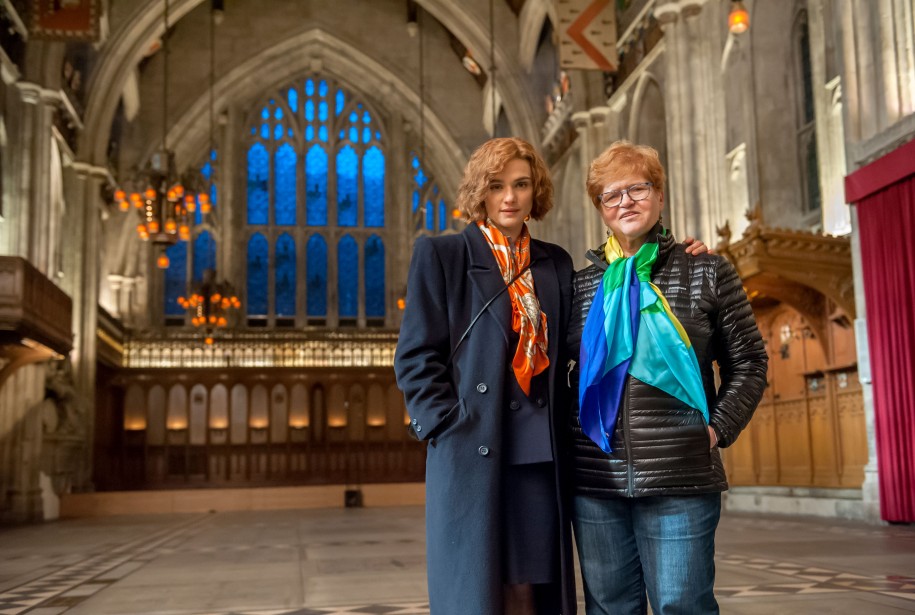
Talking Facts, Hard Work and Rejoicing in Judaism: An Interview with Deborah E. Lipstadt
999

Return of the Jew: Identity Narratives of the Third Post-Holocaust Generation of Jews in Poland
998

